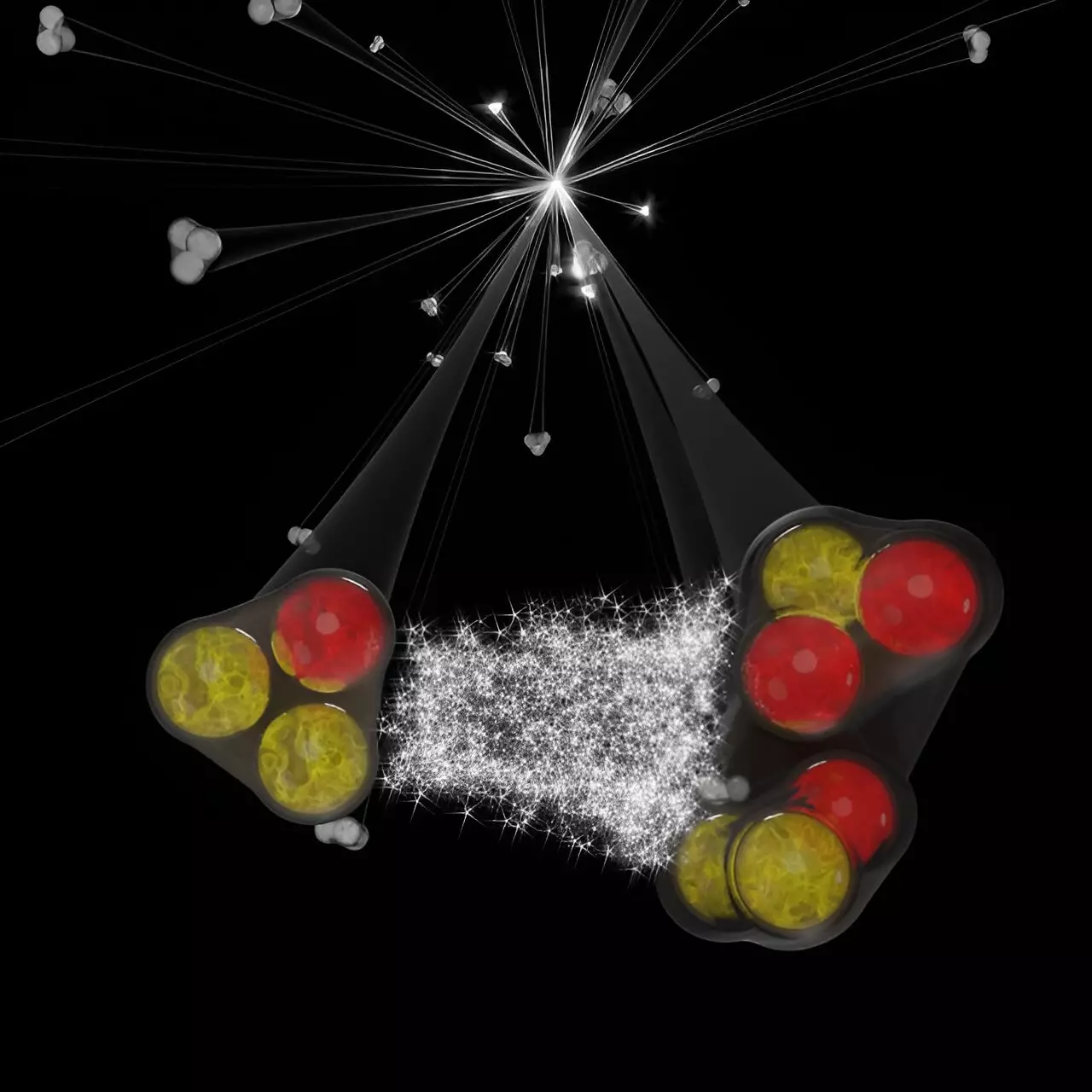Recent breakthroughs in nuclear physics can often be traced back to collaboration and innovative experimentation. In a compelling article published in *Physical Review X*, researchers within the ALICE collaboration have focused on the profound complexities of three-body interactions in nuclear systems, specifically studying kaon-deuteron and proton-deuteron correlations. This research lays the groundwork for a more nuanced examination of interactions among multiple particles, which are crucial for a deeper understanding of nuclear forces and phenomena occurring in the universe, such as those within neutron stars.
Traditionally, fundamental forces have been understood through interactions between pairs of particles. However, the extension of this understanding to three or more bodies introduces significant complexity. The dynamics of three-body nuclear systems are particularly pivotal in revealing important aspects of nuclear structure and the characteristics of high-density nucleonic matter. As such, the analysis of systems like kaons interacting with deuterons enhances our knowledge about nucleon interactions at a fundamental level. Insights drawn from these studies could potentially illuminate the inner workings of neutron stars and other exotic states of matter found in the universe.
In the high-energy collisions facilitated by the Large Hadron Collider (LHC), notably those involving protons, a multitude of particles emerges almost simultaneously. The spatial proximity of these particles – often within femtometer scales – creates an intriguing environment ripe for exploration. By investigating how these closely produced particles may influence one another, researchers can discern various underlying interactions, whether they stem from quantum statistics or fundamental forces like the strong interaction.
The peculiar nature of high-energy collisions presents an ideal scenario for studying three-body systems. When one of the particles is a deuteron complemented by a kaon or proton, a rich interplay of forces emerges that necessitates careful measurement and analysis.
A filling method employed within the ALICE framework is the correlation function, a mathematical representation that elucidates the probability of finding pairs of particles at predetermined momentum values. This function provides a basis on which physicists can discern whether the interactions between particles exhibit attractive or repulsive characteristics. A reading of unity indicates a lack of correlation, while values above or below this threshold suggest attractive or repulsive forces, respectively.
Recent findings regarding kaon-deuteron and proton-deuteron systems reveal a predominance of repulsive interactions at low relative transverse momenta, stripping away layers of complexity to expose the fundamental dynamics at play.
Intriguingly, the ALICE collaboration’s findings present a paradox when contrasting kaon-deuteron and proton-deuteron correlations. While the former’s attractions can be sufficiently modeled using effective two-body theories that incorporate both strong and Coulomb interactions, the proton-deuteron correlations demand a more sophisticated, comprehensive three-body approach. This discrepancy highlights the necessity of understanding the structure of the deuteron itself when evaluating interactions, particularly as it pertains to nuclear forces at short distances.
The results demonstrate an impressive alignment between theoretical calculations and empirical data, particularly through a combined approach examining both two- and three-body interactions. This holistic view indicates that short-range dynamics in three-nucleon systems are perceptibly sensitive to interaction forces, offering fresh avenues for exploration.
The innovative techniques developed through the ALICE collaboration’s analysis have the potential to inform future research, particularly as further data emerges from upcoming LHC runs. This methodological framework could facilitate inquiries into three-baryon systems in the strange and charm sectors, realms that have remained largely uncharted due to historical experimental challenges.
By continuing to leverage the capabilities of high-energy physics experiments, researchers stand poised to further unravel the complex tapestry of nuclear interactions, potentially rewriting our understanding of the universe’s foundational forces in the process.
The pioneering work of the ALICE collaboration signals a critical milestone in nuclear physics research. By shining a light on the often-overlooked three-body interactions, this study sets the stage for a new category of inquiry that could revolutionize our comprehension of fundamental nuclear forces. As the scientific community builds upon these findings, the excitement surrounding the potential discoveries that lie ahead serves as an inspiring reminder of the journey towards understanding the complexities of the universe.


Leave a Reply